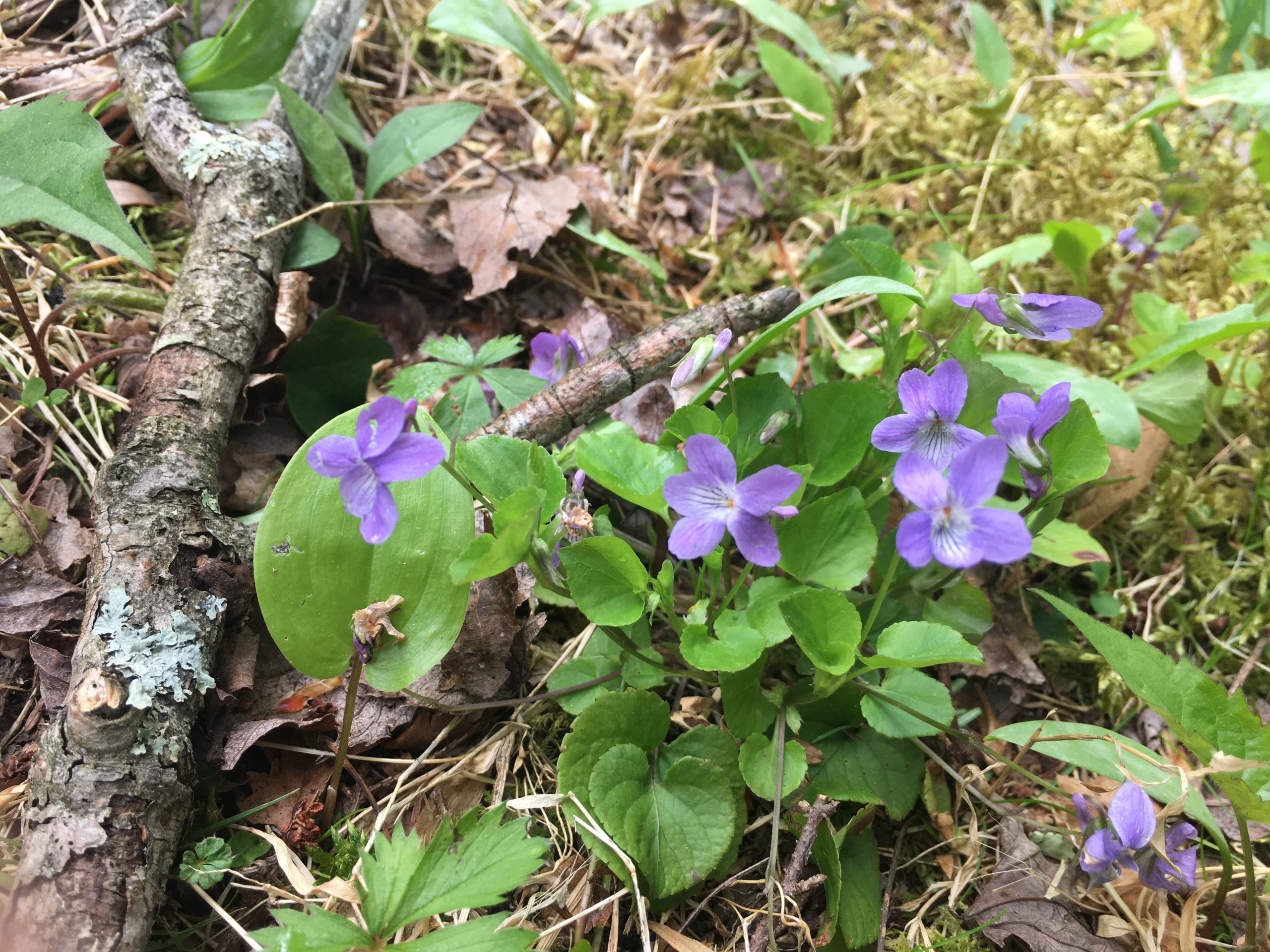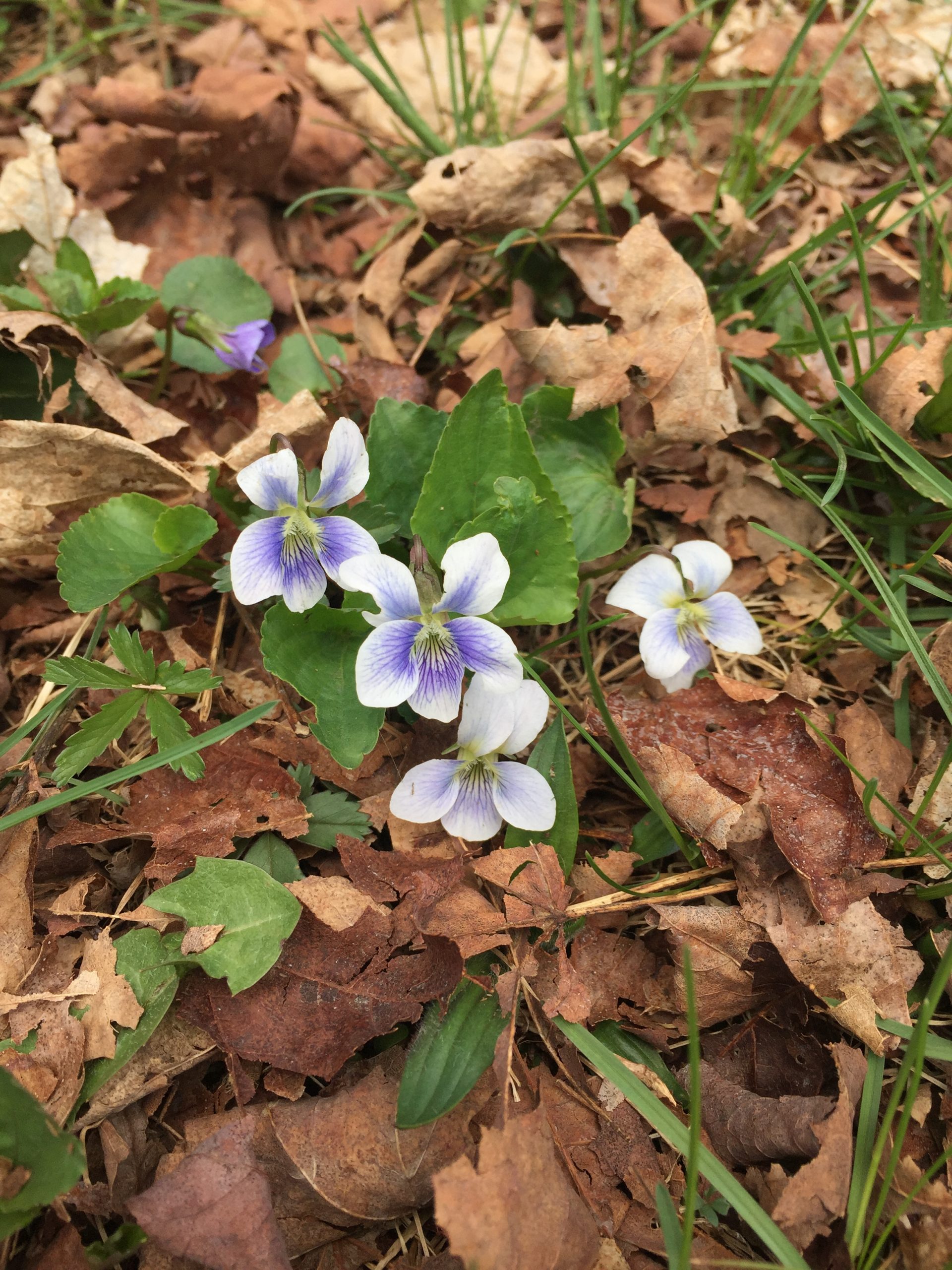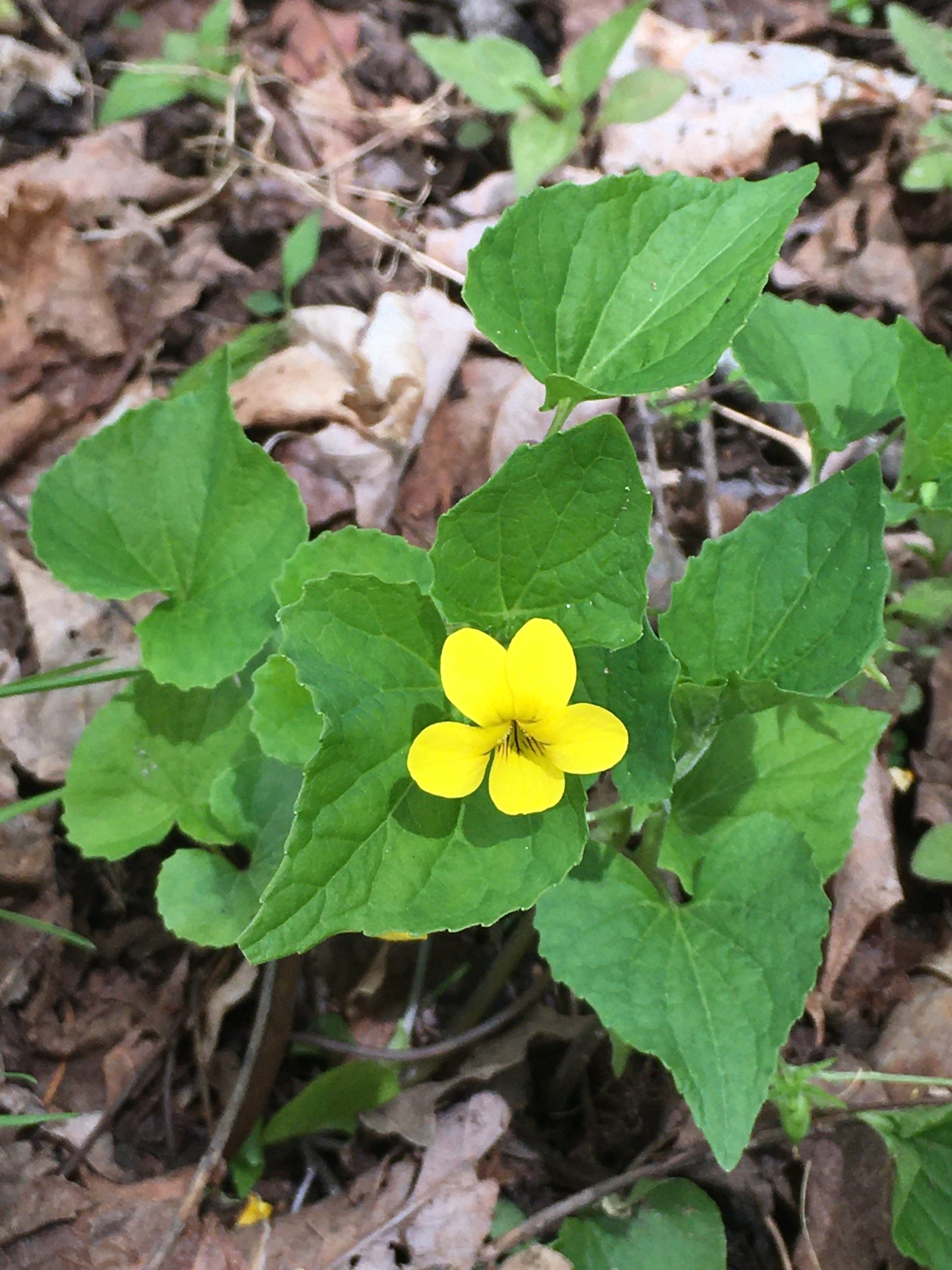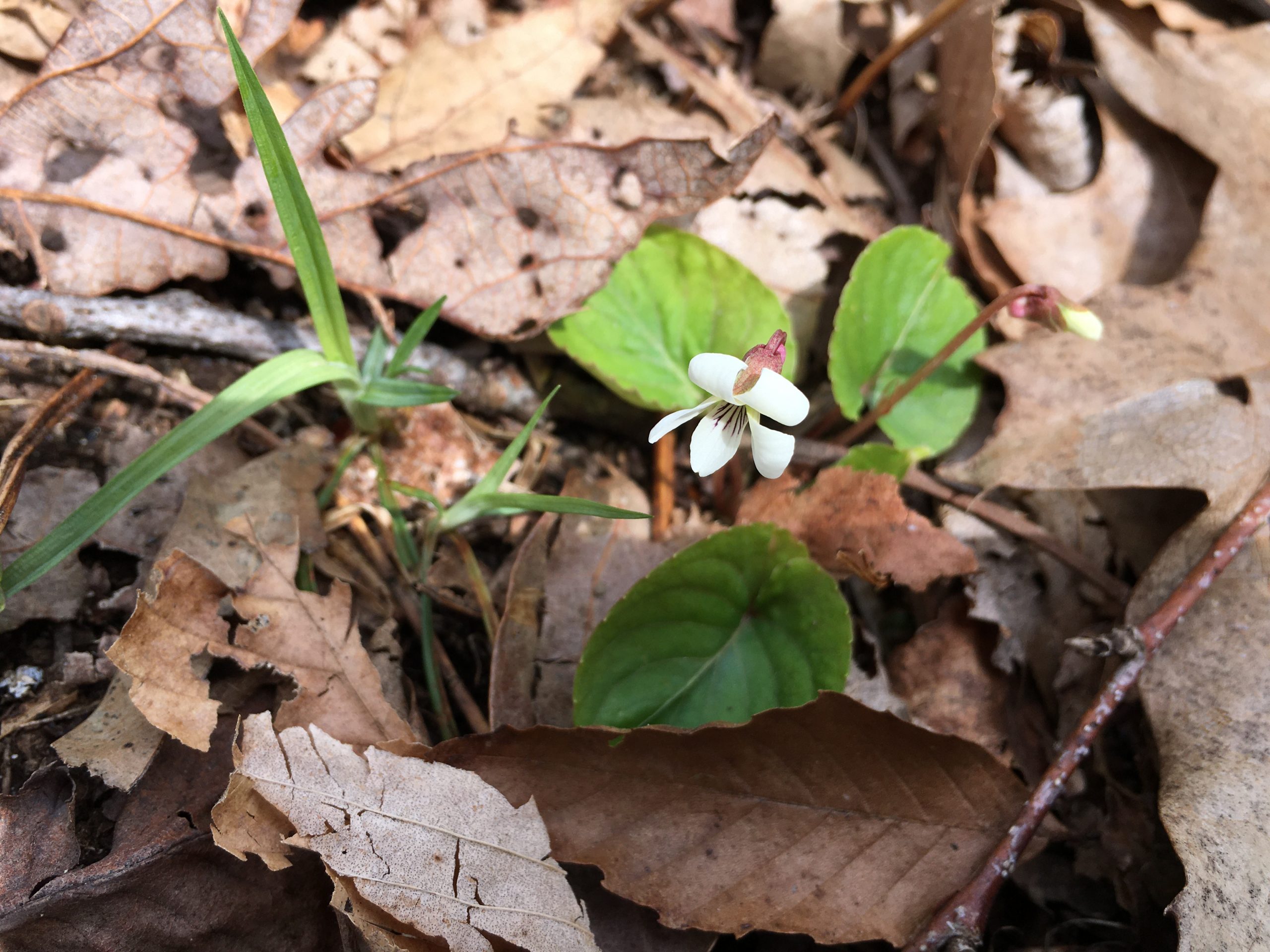Written and photographed by Susan Bergen, NCLT Board Member
There is an idiomatic expression that describes an extremely shy woman as a ‘shrinking violet.’ While violets may be miniscule and often passed over for more showy flowers, there is nothing shrinking about them. They are aggressive colonizers and adapted to reproduce in multiple ways.

Common blue violets
Violets produce two sets of flowers: one that is cross-pollinated and the other which is self-pollinating. The plants are perennial and emerge in April with dainty sweet-scented ‘open’ blooms that attract pollinating insects. These first flowers are cross-pollinated by early season bees, and sometimes wasps, flower flies and butterflies. In early summer, violets produce a second set of ‘closed’ flower buds that never open. These are self-pollinating and can be found lower on the stem. As spring temperatures can be variable, violets sometimes bloom before pollinators are out and active. When this happens, they rely on their second set of self-pollinating buds to secure the survival of the species. After pollination, the seeds develop inside a three-chambered fruit capsule. When ripe, the capsule splits open and the seeds are flung with great force into the air. They can travel several yards away.
Violets also reproduce through their root system. Like many perennial plants they send out stolons, or runners, to form new plants and eventual colonies which are essentially clones of the mother plant.

White wood violets

Downy yellow violets
There are numerous species of native violets growing wild in New Canaan. Because violets hybridize so readily it is often difficult to distinguish them. The most common are the common blue violet (Viola soroaia) and the Canadian violet (Viola canadensis). Most violets have heart-shaped leaves. They grow in shady or semi-shady locations, but will adapt to sunny sports with ample water. They can quickly invade a lawn and/or garden.
Violets have many faunal associations. The Andrena violae mining bee is a specialized feeder on violet blossoms. The plants also serve as hosts for Fritillary butterfly caterpillars. The seeds are harvested and dispersed by Formica polyctena ants. Wild turkeys and mourning doves are partial to dining on the seeds as well. Occasionally deer and rabbits browse the foliage.
Violets may be small, but they are mighty in their own way. They are well adapted to thrive in eastern woodland habitats and, as native plants, conribute to the food web that supports our local wildlife.

Northern white violets
Recent Comments